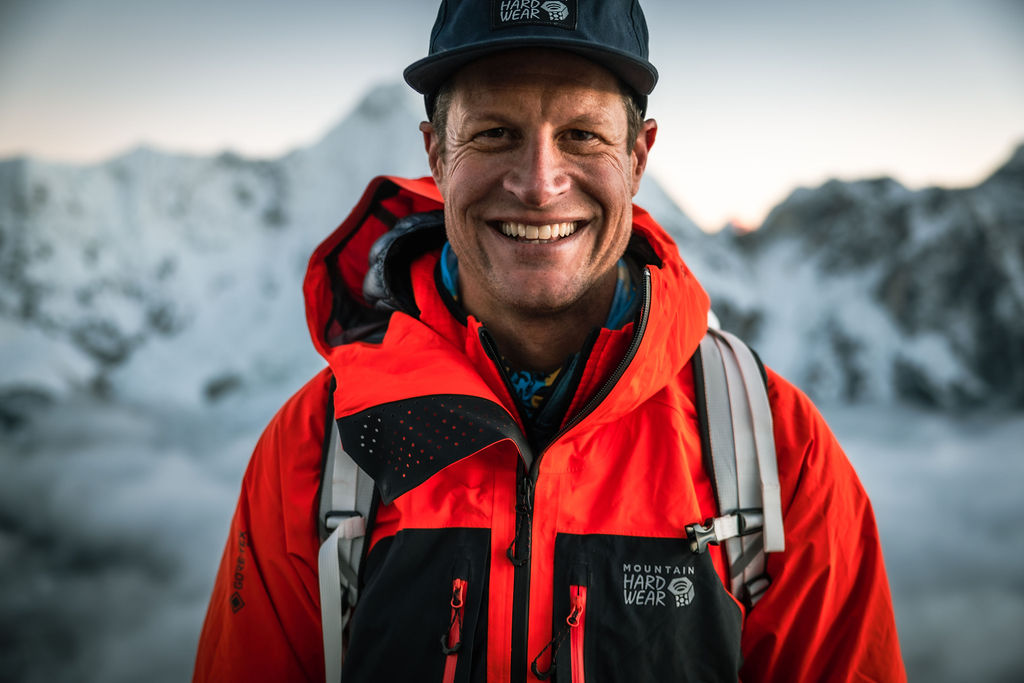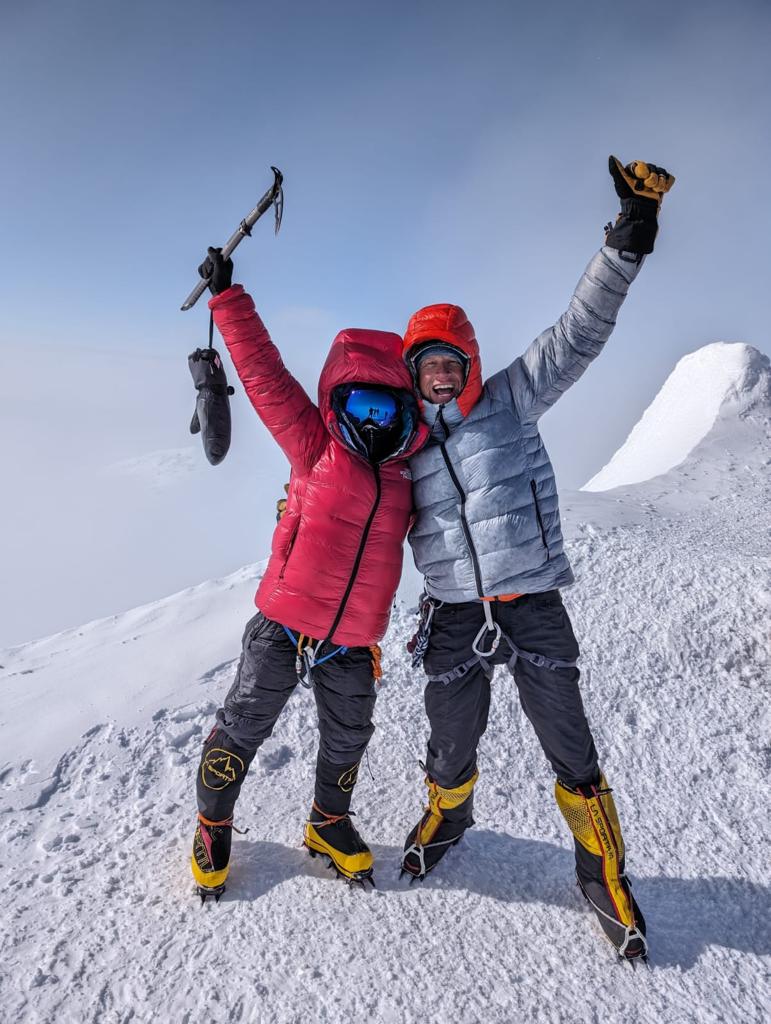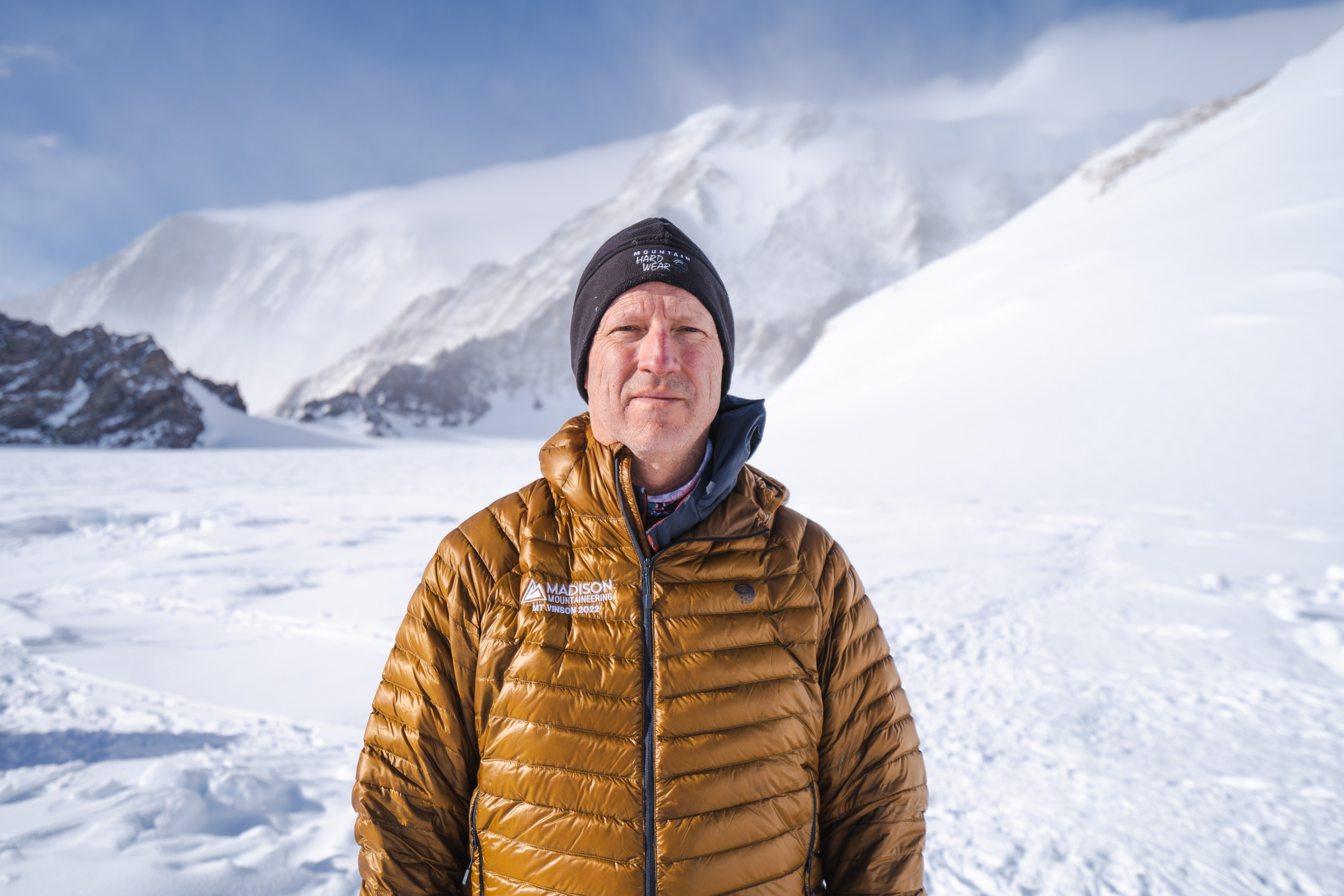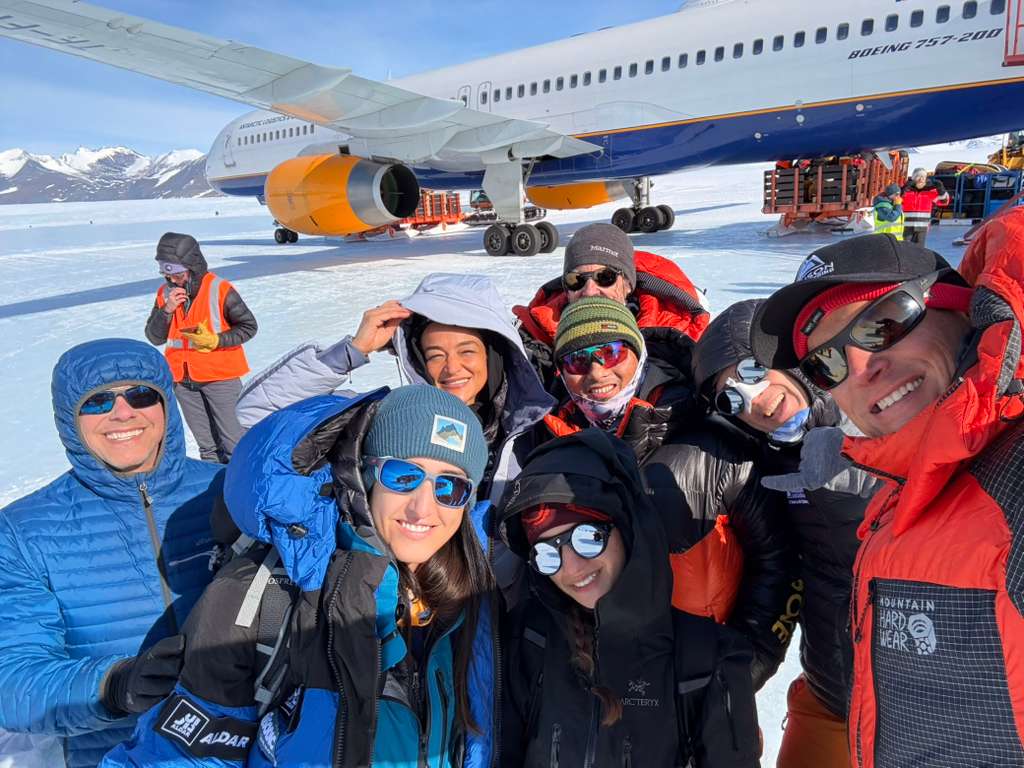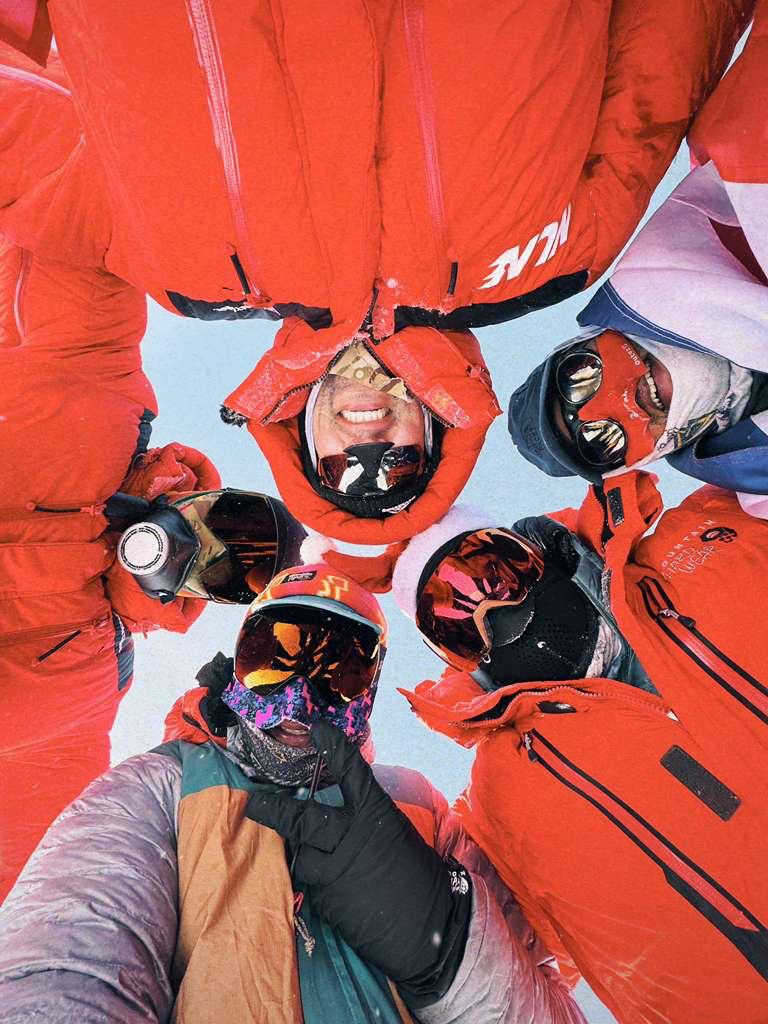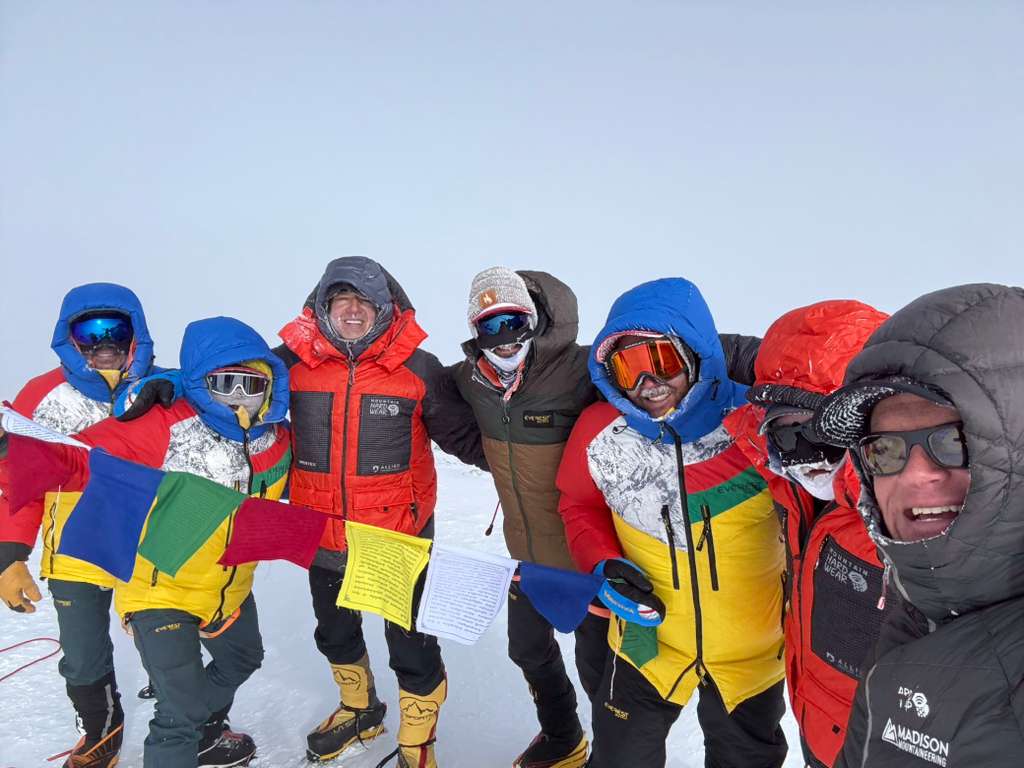Day 1: Arrive in Punta Arenas, Chile. A representative will meet you upon arrival at the airport and take you to our hotel. After settling in, we will conduct a thorough equipment check, and then have a group dinner at one of the many fine restaurants.
Day 2: Pre-Departure Day. After breakfast, we attend a pre-flight briefing with our flight operator, and discuss many aspects of the journey to Antarctica. In the afternoon we send our duffel bags to the airport to be checked and packed for departure. We have the late afternoon and evening to explore the city.
Day 3: Depart for Antarctica. We will call you at your hotel in the morning to advise you of current conditions in Antarctica. If the weather is suitable for our flight, we will pick you up at your hotel within the hour.
At the Punta Arenas airport, we will go through General Airport Security before boarding our chartered jet for the 4 hour flight to Antarctica. Our route crosses the Drake Passage, then follows the west side of the Antarctic Peninsula and the spine of the Ellsworth Mountains. We land on a naturally occurring blue-ice runway on Union Glacier where you will take your first steps in Antarctica.
Upon arrival, you will be transported by specially-adapted vans for the 5 mi (8 km) shuttle to the main camp. The friendly staff will provide a welcome tour of camp and show you to your tent.
Day 4: Expedition Preparations. We will spend the day at Union Glacier camp testing clothing and equipment and practicing sled hauling on a mini-expedition outside of camp.
Day 5: Expedition Preparations. More testing and practicing and then we will pack our sleds and get ready for our departure for 89 degrees South the following day.
Day 6: Fly to 89° South. After breakfast, we will fly by Twin Otter ski fixed-wing aircraft to 89° South, 60 nautical miles (111 km/69 miles) from the South Pole. As the aircraft disappears from view, you’ll be struck by the stark beauty and emptiness surrounding you. There is nothing but snow and wide horizons in all directions.
The team will pack sleds and ski a short distance before setting up camp for your first night on expedition. You have just arrived at altitude and it is important that your pace is slow during this initial ski.
Days 7-11: Ski to the Pole. Continuing your trek south, you’ll ski longer periods each day to begin acclimatizing to the cold and altitude. The elevation here is 9,300 ft (2835 m) but to your body, it will feel more like 10,500 ft (3200 m) due to the lower atmospheric pressure at the poles. Throughout the expedition, you’ll notice the altitude’s impact on your breathing and your stamina.
This journey is physically demanding. Your sled will weigh approximately 66 lb (30 kg) and the snow may be sculpted by the wind into steep ridges called sastrugi, adding to the challenge. Acclimatizing slowly gives your team its best chance for success.
A ‘typical’ day starts with breakfast at 8 am and the team packed up and skiing by 10 am. You’ll make a series of 1-hour marches, stopping for 5-10 minutes each hour for a brief rest and snack break. You’ll travel until about 7 pm and then stop to set up camp and enjoy dinner together. As on all expeditions, success is a team effort, with everyone helping to pitch tents and prepare meals.
The Amundsen-Scott Station may be visible from around 15 mi (24 km) away but those last miles can seem the longest and may take another 1-2 days of travel.
Day 12: Arrive at the Pole! Finally, you’ll take the last steps to your goal and reach the most southerly point on Earth – the Geographic South Pole! Here, beneath your feet, all 360 lines of longitude meet and the ice is almost 10,000 ft (3000 m) thick.
Feel the satisfaction of having arrived here under your own power and reflect on how it must have felt to stand in this place over one hundred years ago, with only the sound of the wind and an endless expanse of white stretching northward in all directions.
You may camp overnight at the South Pole until your pick-up by ski aircraft. The South Pole is an Antarctic Specially Managed Area (ASMA #5). Please respect established protocols while at the South Pole.
Day 13: Return to Union Glacier. Our field staff will stay in close contact with Union Glacier Camp to identify the best ‘weather window’ for your return flight.
Depending on flights, your team’s celebration dinner may take place at our South Pole camp or upon your return to Union Glacier. You’ll receive a certificate to commemorate your Ski Last Degree Expedition and may have at least one day to explore more of Union Glacier before departing Antarctica.
Day 14: Return to Chile. When weather and runway conditions permit, our intercontinental aircraft will arrive at Union Glacier to transport you back to Chile. Once your flight has been confirmed we will ensure that you have a hotel reservation in Punta Arenas. If the flight returns in the early morning, we will book your reservation for a day ahead of your arrival because many hotels do not allow check-in until after 3:00pm.
If in the event of a delay we cannot adjust your reservation, we will find you a new hotel of comparable quality. Upon your arrival our staff will meet you at the airport and transfer you and your bags back to your hotel.
Day 15: Sightseeing and preparations to return home from Punta Arenas.
Day 16: Depart Punta Arenas for home.
Days 17-21: Extra days in case of bad weather or flight delays – we strongly recommend booking a changeable return flight for ~5 days after the scheduled departure day (Day 16) to accommodate any unexpected expedition itinerary delays.
Ski the Last Degree to the South Pole
- December 4 – 19, 2026
- December 15 – 30, 2026
- January 1 – January 16, 2027
Cost:
USD 81,050
Deposit:
USD 20,000
Costs Include:
- Round trip flights from Punta Arenas to Antarctica
- All flights within Antarctica to reach 89° South and back to Union Glacier
- All accommodation and services while in Antarctica
- All meals in Antarctica
- All team equipment (tents, ropes, cooking equipment, etc.)
- All communications equipment such as VHF radios and satellite phone
- Guide service fees
- Daily weather forecasting during the climb
Costs Do Not Include:
- Bank transfer fees, if needed
- Accommodation and meals in Punta Arenas
- Personal items (see equipment list)
- Medical and Evacuation Insurance (required)
- Trip cancellation insurance (highly recommended)
- Any charges incurred that are beyond the control of Madison Mountaineering
- All prices and program dates are subject to change
Cancellation/Refund Policy
- There are no refunds for the deposit or balance payments for this expedition. This includes but is not limited to, expeditions that conclude without reaching or making progress towards expedition objective(s) (for example, the summit) due to route conditions, weather, insufficient manpower, or any other factor outside the control of Madison Mountaineering.
- Expedition leader has the final say on the expedition conclusion and will make all best efforts towards reaching expedition objective(s) within our margin of safety.
- Participants that choose to leave an active expedition for any reason are not entitled to any refunds
- Madison Mountaineering, LLC highly recommends trip cancellation insurance for all expeditions
- Due to the nature and heavy costs of government and operator permits, Madison Mountaineering must adhere to a stringent refund policy
- Deposit due with registration materials
- All balances are due 120 days prior to departure date unless otherwise specified
- Participants whose balances are not received by the 120-day deadline as stated above, risk forfeiture of their funds and their place on the expedition
Note: Madison Mountaineering, LLC reserves the right to waive any fees. As we offer personalized service, we will attempt to accommodate changes and cancellations when necessary, waiving certain fees when feasible. Deposits paid by participants acknowledge the above cancellation terms.
Madison Mountaineering is recognized for well thought out strategy in leading high altitude climbing expeditions, as well as high-quality service throughout. We have two decades of experience in the planning and coordination of mountaineering expeditions, our reputation is excellent. We strive to make each expedition the best possible experience for our climbers and focus on our 3 primary goals of success in reaching the summit, returning safely, and having fun! Safety is always our number one priority.
Our guides are some of the best and most experienced in the industry, having a strong grasp of technical climbing, expedition, and high altitude experience, along with strong interpersonal skills. Our teams are small and equipped with the best support available to ensure the highest chance of success. We are renowned for our comfortable base camps, high-quality food, first-rate communications, and medical support services, all of which are overseen by a professional member of our team.
Most of our climbers have either climbed with us before, been referred by a friend who has climbed with us, or met one of our teams while attempting another peak and decided to join us for their next expedition. We work hard to facilitate safe, successful, and enjoyable expeditions for all of our climbers. Our track record and past climber testimonials prove we are highly competent experts in our field and love what we do!



